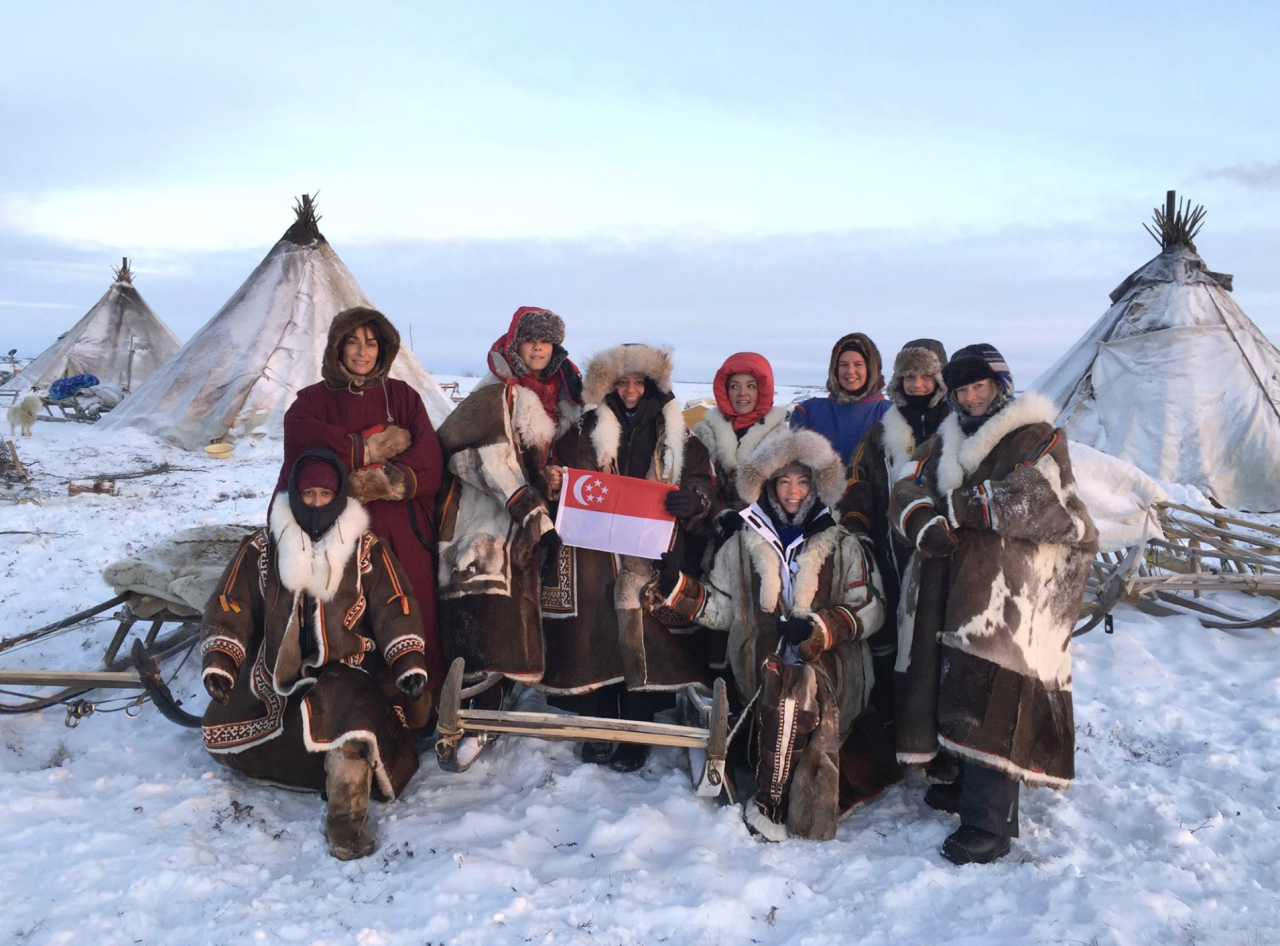
Every issue, GRAZIA Singapore highlights a Game Changer who inspires, educates and celebrates individuality, beauty and style. This month, meet Christine Amour-Levar, social entrepreneur, author and co-founder of women’s conservation advocacy nonprofit HER Planet Earth.
I believe we are here, on Earth, to live a grand and exciting adventure that’s made up of a series of smaller adventures. We are meant to discover, grow, be creative and have a positive impact on the people and the world around us. Anything less feels like such a missed opportunity.
A few months ago, I travelled to Antarctica for a second time. This time, though, it wasn’t for one of my usual fundraising expeditions, but to accompany a team of scientists from the Earth Observatory of Singapore (EOS) to better understand the processes that affect sea-level rise, which has consequences for billions of people on Earth.

While they were there, the scientists, led by Director of EOS Professor Benjamin Horton, also conducted a range of fascinating research activities. These included ice coring, to understand past temperatures and the current rate of ice melting; sampling deep water in the Antarctic, to analyse its chemistry and its influence on the movement of the world’s oceans; and air sampling, to investigate microorganisms in the atmosphere.
As a low-lying island in the tropics, Singapore—where I reside—is especially vulnerable to changes in the oceans, and this trip only reinforced my realisation that we are truly at a tipping point in the very fate of human civilisation. We have but a few years to try and protect this environment, so that future generations have a place to live and prosper. As a result of this trip, I gained an even greater sense of urgency about the state of our environment. Yet, when you travel to Antarctica with a group of young scientists, as part of an international team, there is also a great sense of hope. Every young person has such an important role to play to save their generation and future generations from this urgent threat of climate catastrophe.

Indeed, these past eleven years, I have tried to take positive action in my unique way. Through my two NGOs, Women on a Mission and HER Planet Earth, I’ve had the great privilege of recruiting hundreds of women, of all nationalities, ages and backgrounds, to travel with me to off-the-beaten-track locations around the world on challenging and often pioneering expeditions, to support and raise funds for valuable programmes that empower women, especially women impacted by violence, economic crisis and climate change.
My team and I have run expeditions to some incredible places, from regions of the Arctic circle, to the coldest, windiest and most remote continent on Earth, Antarctica. We’ve crossed the world’s largest caves in Vietnam, so big in parts you could fly a Boeing 747 through them. We’ve sailed past remote islands in Asia and experienced real Robinson Crusoe-like moments.
We became the first all-female team to bike across the frozen Arctic Circle Trail in Greenland, and the first group to stand-up-paddleboard down rivers in the Kingdom of Bhutan and bike across the Danakil Depression in Ethiopia—the hottest place on Earth. We’ve migrated with reindeer herders in the middle of the Siberian winter, ridden on semi-wild horses with Kazakh eagle hunters in Mongolia, and climbed many mountains in the Himalayas, Iceland and Africa.

As you can imagine, these unique experiences with teams of women to some of the most inhospitable and remote places in the world have truly been incredibly humbling and formative experiences for me. They have forced me to push past my limits on multiple occasions—testing my mental, physical and emotional resilience—while allowing me to grow, succeed and fail in countless ways.
As I take stock of these past few years and plan the next stage of my career in this post-pandemic world, I realise that I’ve learnt more about myself and about leading teams through these experiences than in my 20 years in the corporate world, and as a result, I’ve found my own brand of leadership. I call it Wild Wisdom—the knowledge, self-awareness, and perspective you gain from spending time exploring the natural world and from having a full spectrum of life experiences.
Wild Wisdom allows you to understand yourself better, makes you a more courageous and compassionate leader, and sheds light on the relationship between nature and humans. Without a doubt, one of the most important lessons from this unusual journey has been that our mission in life should be about empowering and advancing others, lifting them up and helping them progress, and not about wielding power or accumulating wealth.

I’ve come to realise that good leaders inspire their team, tribe or pack—whatever you choose to call it—to be a part of something bigger than themselves, something more meaningful and ultimately more fulfilling. Put simply, I believe that we should all aspire to help others grow closer to who they are meant to be, and our real value as human beings ought not to be measured by how much we have achieved in life, but by how well we advance the lives of others along the way.
These expeditions that I have been fortunate to lead and organise over the years were trials by fire. They taught me unforgettable lessons of humility and gave me a depth of maturity that I would never have developed in any other way. I came to understand that the experiences that at the time felt most unpleasant and challenging were in fact the most formative and fulfilling. Time and time again, I learnt how vital it was to be authentic, aligning actions with values—and not the other way around.
